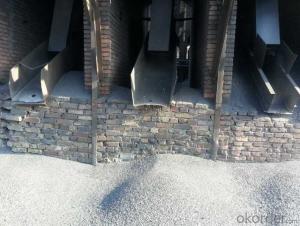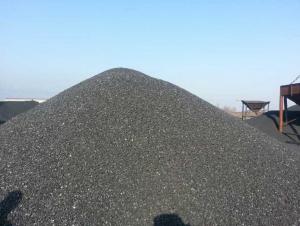Calcined Anthracite CNBM High Quality Anthracite
- Loading Port:
- Tianjin
- Payment Terms:
- TT OR LC
- Min Order Qty:
- 0 m.t.
- Supply Capability:
- 100000 m.t./month
OKorder Service Pledge
OKorder Financial Service
You Might Also Like
Packaging & Delivery
| Packaging Detail: | 25kgs/50kgs/1ton per bag or as buyer's request |
| Delivery Detail: | Within 20 days |
Advantage and competitive of caclined anthracite
1. strong supply capability
2. fast transportation
3. lower and reasonable price for your reference
4.low sulphur, low ash
5.fixed carbon:95% -90%
6..sulphur:lower than 0.3%
Specifications
Calcined Anthracite
Fixed carbon: 90%-95%
S: 0.5% max
Size: 0-3. 3-5.3-15 or as request
Calcined Anthracite is produced using the best Anthracite-Taixi Anthracite with low S and P, It is widely used in steel making and casting.
General Specification of Calcined Anthracite:
PARAMETER UNIT GUARANTEE VALUE | |||||
F.C.% | 95MIN | 94MIN | 93MIN | 92MIN | 90MIN |
ASH % | 4MAX | 5MAX | 6MAX | 7MAX | 8MAX |
V.M.% | 1 MAX | 1MAX | 1.5MAX | 1.5MAX | 1.5MAX |
SULFUR % | 0.5MAX | 0.5MAX | 0.5MAX | 0.5MAX | 0.5MAX |
MOISTURE % | 0.5MAX | 0.5MAX | 0.5MAX | 0.5MAX | 0.5MAX |
Size can be adjusted based on buyer's request.
Pictures of Calcined Anthracite:
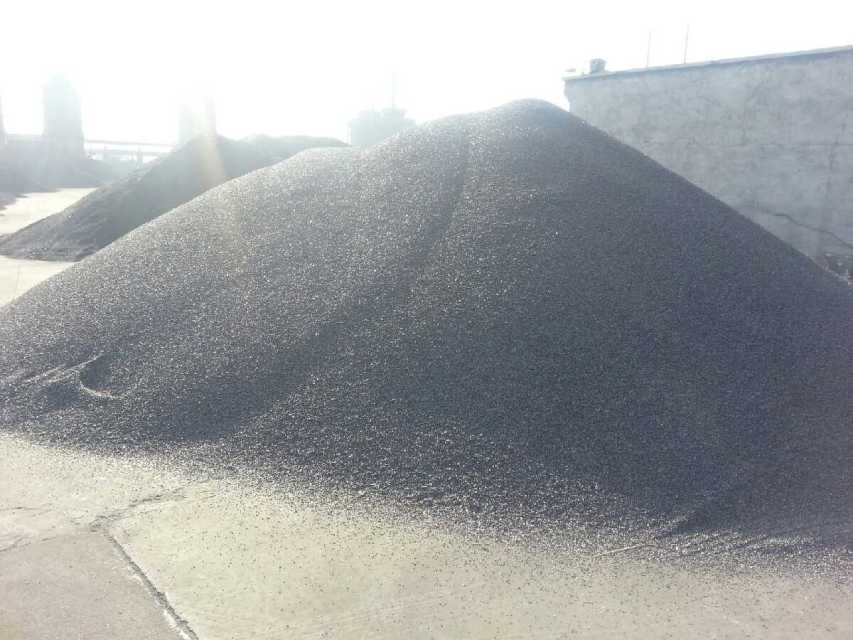
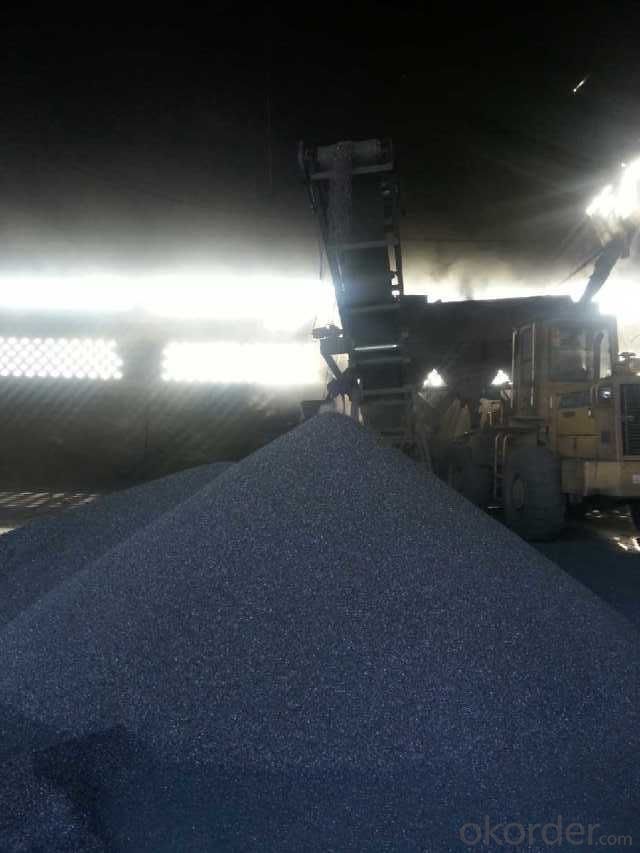
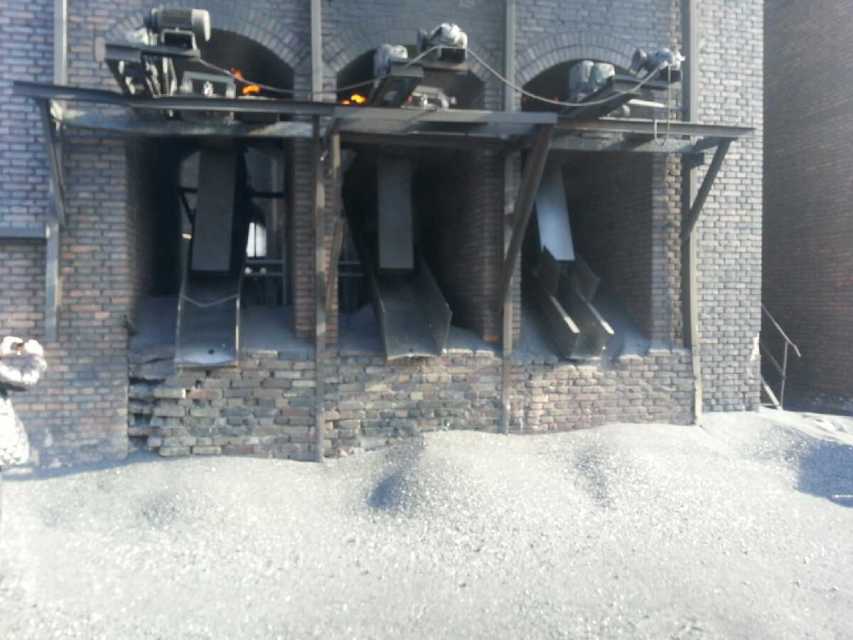
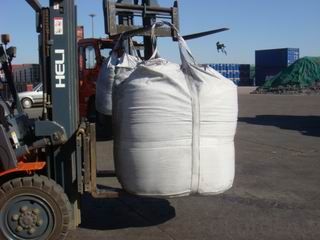
We can supply below furnace charges, please feel free to contact us if you areinterested in any of any of them:
Coke (Metallurgical, foundry, gas)
Calcined Anthracite with fixed carbon from 90% to 95%
Calcined Petroleum Coke
Graphite petroleum coke
Amorphous Graphite
- Q: What are the impacts of carbon emissions on the stability of savannas?
- The stability of savannas, which are delicate and diverse ecosystems, is significantly affected by carbon emissions. One of the main outcomes of carbon emissions is the increase in greenhouse gases, including carbon dioxide, in the atmosphere. This results in global warming, which directly and indirectly impacts savannas in various ways. To begin with, global warming caused by higher temperatures can disrupt the natural fire regimes in savannas. These ecosystems have adapted to periodic fires, which are essential for maintaining their structure and biodiversity. However, increased temperatures can intensify and prolong fire seasons, leading to more frequent and intense wildfires. As a result, the natural balance is disturbed, resulting in the loss of vegetation, changes in species composition, and reduced overall stability of the savanna ecosystem. Additionally, elevated levels of carbon dioxide can affect the physiology and growth of plants. While some studies suggest that increased carbon dioxide concentrations may enhance plant productivity in savannas, it is important to consider other factors such as nutrient and water availability. If these factors do not keep up with the increased carbon dioxide levels, the positive effects on plant growth may be limited, resulting in imbalances within the ecosystem. Moreover, carbon emissions contribute to climate change, which alters rainfall patterns and distribution. Savannas rely on a delicate balance between wet and dry seasons, and changes in precipitation patterns can disrupt this balance. This affects the availability of water for plants and animals, leading to shifts in species distribution, reduced habitat suitability, and increased competition for limited resources. All these factors further destabilize the savanna ecosystem. Lastly, carbon emissions also contribute to ocean acidification, which affects marine ecosystems. Coral reefs, which are connected to savannas through coastal regions, provide crucial habitat and protection for many marine species. Acidic waters can harm coral reefs, leading to their decline and subsequent loss of biodiversity in savanna ecosystems. In conclusion, the stability of savannas is significantly impacted by carbon emissions. Global warming, changes in fire regimes, altered precipitation patterns, and ocean acidification all affect the delicate balance and biodiversity of these ecosystems. Addressing carbon emissions and mitigating their effects is crucial for ensuring the long-term stability and conservation of savannas and the services they provide.
- Q: What's the reason for grading? What about the use of composites? What's the difference?
- 3, carbon fiber has high strength, high modulus, high temperature resistance, corrosion resistance, fatigue resistance, creep resistance, electrical conductivity, heat transfer and other characteristics, is a typical high-tech products. Mainly used in the preparation of advanced composite materials (ACM), has been widely used in aerospace, sporting goods industry, industrial fields, transportation and civil construction field. In view of the composite technology in military industry, reduce the cost of carbon fiber atrophy and advanced low cost manufacturing breakthrough, carbon fiber composite material used in construction, industry, transportation and other aspects has become a hot research and development, and achieved a breakthrough in certain
- Q: What do you stand for?Tar, smoke, nicotine, and carbon monoxide. What do you mean? What's the size of the smoke, or the size of the smoke? What's the connection? Smoking is harmful, so how do you choose to smoke smaller cigarettes?
- Compared with the 1mg now, but the taste of light to you simply don't get things, unable to meet the physiological needs, will be more big. So the deep harm than simple 5mg smoke into the lungs and then exhale.Just feel well enough on the line. This was something very mysterious, you can go to a professional ask smoking community. Um. Provide a product Baidu search on it. Is a product tasting tea smoke forum.
- Q: How is carbon used in the production of paints and coatings?
- Carbon is used in the production of paints and coatings in several ways. Firstly, carbon black is a common pigment used in paints and coatings to provide color and opacity. It is made by burning natural gas or oil in a controlled environment, resulting in fine particles of carbon. Carbon black enhances the color intensity and durability of the paint or coating, as well as improves its resistance to UV light and weathering. Additionally, carbon-based compounds, such as resins and polymers, are used as binders in the formulation of paints and coatings. These binders help hold the pigment particles together and adhere them to the surface being painted or coated. Carbon-based binders are known for their excellent adhesion properties, which contribute to the durability and longevity of the paint or coating. Furthermore, carbon nanotubes are increasingly being used in the production of high-performance paints and coatings. These nanotubes, which are cylindrical carbon structures, have exceptional mechanical, thermal, and electrical properties. They can be incorporated into paint or coating formulations to enhance their strength, conductivity, and resistance to corrosion or abrasion. In summary, carbon plays a crucial role in the production of paints and coatings. It is used as a pigment to provide color and opacity, as binders to hold the pigment particles together, and as carbon nanotubes to enhance the performance and functionality of the final product.
- Q: What are the implications of melting permafrost on carbon emissions?
- The implications of melting permafrost on carbon emissions are significant and concerning. Permafrost refers to the permanently frozen ground found in cold regions, consisting of soil, rocks, and organic matter. It acts as a large carbon sink, storing vast amounts of organic material, such as dead plants and animals, which have been frozen for thousands of years. However, with rising global temperatures, permafrost is thawing at an alarming rate, leading to potential release of this stored carbon into the atmosphere. When permafrost thaws, the organic matter within it decomposes, releasing greenhouse gases, particularly carbon dioxide (CO2) and methane (CH4), into the atmosphere. Methane is an especially potent greenhouse gas, with a global warming potential over 25 times greater than that of CO2 over a 100-year period. The release of these gases further contributes to climate change, exacerbating the already accelerating warming trend. The implications of melting permafrost on carbon emissions are twofold. Firstly, the release of large amounts of CO2 and methane from thawing permafrost can significantly amplify the greenhouse effect, leading to more rapid and intense climate change. This can result in a feedback loop, where increased warming causes more permafrost thawing, releasing more carbon, and further accelerating global warming. Secondly, the release of carbon from permafrost also affects global carbon budgets and climate change mitigation efforts. The stored carbon in permafrost is estimated to be twice as much as is currently present in the Earth's atmosphere. As this carbon is released, it adds to the overall carbon emissions, making it more challenging to achieve emission reduction targets outlined in international agreements, such as the Paris Agreement. It also means that efforts to limit global warming to well below 2 degrees Celsius above pre-industrial levels become even more crucial. Furthermore, the release of carbon from permafrost also impacts local ecosystems and communities. Thawing permafrost can lead to the destabilization of infrastructure, including buildings, roads, and pipelines, as well as the disruption of traditional livelihoods, such as hunting and reindeer herding. It can also cause land subsidence and increased coastal erosion, threatening coastal communities and biodiversity. In conclusion, the implications of melting permafrost on carbon emissions are far-reaching. It not only exacerbates climate change by releasing potent greenhouse gases into the atmosphere but also hampers global efforts to mitigate carbon emissions. Sustainable actions to reduce greenhouse gas emissions and protect permafrost ecosystems are crucial to minimize these implications and safeguard our planet's future.
- Q: What are the effects of carbon dioxide on ocean acidity?
- Carbon dioxide can significantly increase the acidity of the oceans, a process known as ocean acidification. As CO2 dissolves in seawater, it reacts with water molecules, forming carbonic acid. This acidification negatively impacts marine life, particularly organisms that rely on calcium carbonate to build their shells or skeletons, such as coral reefs, mollusks, and some plankton species. The increased acidity can hinder the ability of these organisms to form and maintain their structures, ultimately disrupting entire marine ecosystems and biodiversity.
- Q: How does carbon impact the availability of freshwater resources?
- Carbon impacts the availability of freshwater resources through various interconnected processes. One of the major ways carbon affects freshwater availability is through climate change. The increased levels of carbon dioxide in the atmosphere, primarily due to human activities such as burning fossil fuels, contribute to global warming. This leads to changes in precipitation patterns, including altered rainfall distribution and intensity. Warmer temperatures caused by carbon emissions can increase evaporation rates and lead to more frequent and severe droughts in certain regions. This reduces the amount of water available for freshwater resources such as rivers, lakes, and reservoirs. Additionally, the changing climate can disrupt natural water cycles, affecting the recharge of groundwater aquifers, which are crucial sources of freshwater. Furthermore, carbon impacts the quality of freshwater resources. Acid rain, a result of increased carbon emissions reacting with atmospheric moisture, can acidify freshwater bodies and make them inhospitable for many aquatic organisms. This disrupts ecosystems and can lead to the loss of species that rely on freshwater resources for their survival. Another way carbon impacts freshwater availability is through its influence on land use. The conversion of forests and wetlands into agricultural or urban areas releases carbon stored in vegetation and soil. This not only contributes to carbon emissions but also reduces the capacity of natural ecosystems to retain and filter water. Forests, for example, play a vital role in maintaining the water cycle by absorbing rainfall and releasing it gradually into streams and groundwater. Deforestation disrupts this process and can lead to decreased water availability downstream. In conclusion, carbon emissions have a significant impact on the availability of freshwater resources. Through climate change, carbon alters precipitation patterns, leading to droughts and reduced water availability. It also affects the quality of freshwater through processes like acid rain. Additionally, land-use changes driven by carbon emissions can further decrease freshwater availability by disrupting natural water cycles.
- Q: What is carbon nanomembrane?
- Carbon nanomembrane is a thin, flexible sheet made up of carbon atoms arranged in a precise pattern. It has unique properties such as high strength, electrical conductivity, and impermeability, making it suitable for various applications like filtration, energy storage, and biomedical devices.
- Q: What are the consequences of increased carbon emissions on global food security?
- Global food security is significantly impacted by increased carbon emissions, with a range of consequences. One immediate effect is the alteration of weather patterns and an increase in extreme weather events, such as droughts, floods, and heatwaves. These events can result in crop failures, reduced agricultural productivity, and the loss of livestock, ultimately leading to food shortages and price instability. In addition, carbon emissions contribute to climate change, which causes long-term shifts in temperature and precipitation patterns. Higher temperatures can accelerate the growth and reproduction rates of pests and diseases, posing a severe threat to crops and livestock. Furthermore, changes in rainfall patterns can disrupt the timing and quantity of water available for irrigation, further reducing agricultural productivity. Moreover, carbon emissions contribute to ocean acidification, negatively impacting marine ecosystems and the livelihoods of fishing and aquaculture communities. This can result in a decline in fish stocks, jeopardizing an essential source of protein and nutrition for millions of people. Increased carbon emissions also lead to the loss of biodiversity. Climate change disrupts ecosystems, leading to the extinction or migration of plant and animal species. This loss of biodiversity reduces the resilience and adaptability of agricultural systems, making them more susceptible to pests, diseases, and environmental pressures. Ultimately, the consequences of increased carbon emissions on global food security are extensive and intricate. They include diminished agricultural productivity, rising food prices, food shortages, and limited access to nutritious food. Addressing carbon emissions and mitigating climate change is vital to ensure a sustainable and secure global food system for future generations.
- Q: What is the carbon cycle?
- The movement of carbon dioxide (CO2) between the atmosphere, land, bodies of water, and living organisms comprises the natural process known as the carbon cycle. It serves as a crucial component of Earth's ecosystem, playing a vital role in regulating the planet's climate. The carbon cycle commences with plants absorbing CO2 through photosynthesis. CO2 is taken in from the atmosphere and transformed into organic compounds, such as glucose, used for growth and energy. This process is referred to as carbon fixation. Animals and other consumers acquire carbon by consuming plants or other animals that have already incorporated carbon into their tissues. When plants and animals respire, they release CO2 back into the atmosphere, completing the initial stage of the cycle. Decomposers, including bacteria and fungi, contribute to another pathway in the carbon cycle by decomposing organic matter. During decomposition, carbon is released as CO2 or enters the soil as organic carbon. This stored carbon can later be released into the atmosphere through microbial respiration or erosion. The exchange of carbon between the atmosphere and bodies of water is also involved in the carbon cycle. When CO2 dissolves in water, it forms carbonic acid, leading to ocean acidification. Marine plants, such as algae and phytoplankton, play a critical role in the cycle by photosynthesizing and absorbing CO2 from the water. Geological processes, such as volcanic activity and weathering, additionally release carbon into the atmosphere. Over extended periods, carbon can be stored in the Earth's crust as fossil fuels like coal, oil, and natural gas. The burning of these fossil fuels for energy releases significant amounts of CO2, contributing to the greenhouse effect and climate change. The carbon cycle is an ongoing and intricate process that maintains a delicate balance of carbon in the Earth's atmosphere and ecosystems. However, human activities, particularly the burning of fossil fuels and deforestation, have profoundly disrupted this balance by releasing excessive amounts of CO2 into the atmosphere. This disruption has resulted in global warming and other environmental issues, underscoring the importance of comprehending and mitigating human impacts on this crucial natural process.
Send your message to us
Calcined Anthracite CNBM High Quality Anthracite
- Loading Port:
- Tianjin
- Payment Terms:
- TT OR LC
- Min Order Qty:
- 0 m.t.
- Supply Capability:
- 100000 m.t./month
OKorder Service Pledge
OKorder Financial Service
Similar products
Hot products
Hot Searches
